The Lost Art of Penmanship
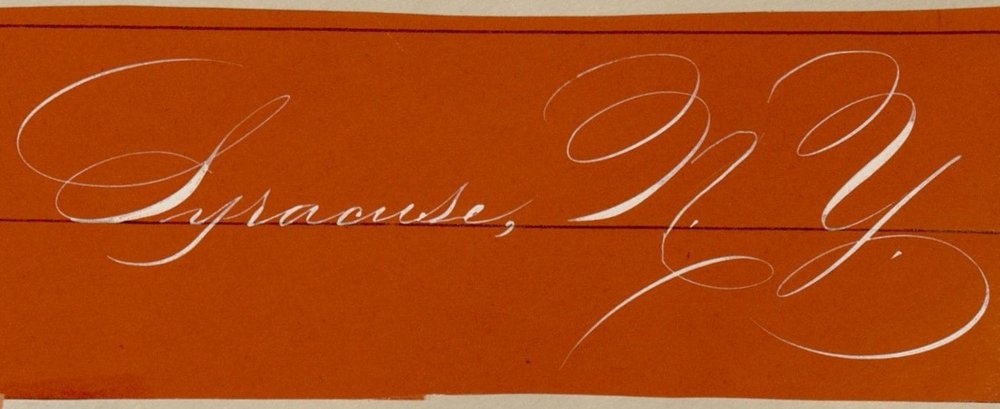
by Emma MacDowell G’25, School of Information Studies and Special Collections Research Center Public Services Graduate Reference Assistant
Florid expressions of lines and figures trapse along the paper to form a cohesive body of artistic communication. One can sense the sheer precision and intention implicated in each embellished character. Specimens are detailed with swirled characters and dramatic dashes of jet-black ink.
Whatever became of cursive print and the tradition of penmanship? Why is it no longer prioritized and practiced in grade school? Perhaps the convenience of digital communication has minimized the popularity of old-fashioned pen and paper.
I dove into the contents of the SCRC’s Penmanship Collection and found a wide range of manuscripts and specimens devoted to this art form.
Penmanship was not only exercised for pleasure and artistic expression, but it was also a form of livelihood. The collection documents the work and experiences of professional penmen across the country. Many of them enrolled in specialized schools and courses devoted to ornamental lettering.
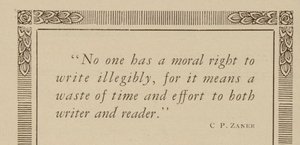
One of the more notable penmanship institutions was the Zanerian Penmanship College in Columbus, Ohio, and founded by the world-renowned penman Charles Paxton Zaner, and his business partner Elmer Ward Bloser, in 1888. Zaner encapsulated the fervent attitude of the time by stating “No one has a moral right to write illegibly, for it means a waste of time and effort to both writer and reader.” Although handwriting was a high priority, the Zanerian Penmanship College was not solely devoted to illustrious lettering. Penmanship was taught alongside other core academic subjects to transform students into “employable and empowered communicators.”
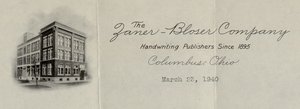
The Zanerian Penmanship College became known as the Zaner-Bloser Company in 1895 when they began to sell handwriting instruction materials. Zaner-Bloser still exists today and offers educational programs, resources and events related to handwriting, reading and several other academic subjects.
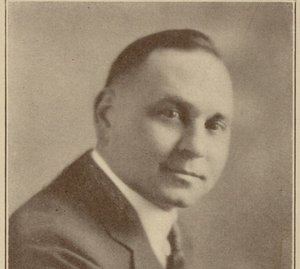
An alum of the Zanerian Penmanship College, Albert P. Meub, is well-represented in the Penmanship Collection. Meub was a nationally renowned penman and instructor who advocated adding penmanship to the regular school curriculum. Along with his teaching position at Pasadena High School in California, Meub broke into the business of correspondence course programs, a precursor to modern distance learning. Meub’s “Penmanship by Mail” courses offered students personalized Business Writing or Ornamental Penmanship lessons and critiques written “fresh from the pen” of Meub himself.
Meub firmly believed that fine penmanship skills could make one employable, as evidenced by his penmanship courses and his penmanship specimen and supply business. Before the dawn of mass-produced Hallmark cards, greeting cards would be hand-adorned, and sometimes even pre-addressed by penmanship experts.
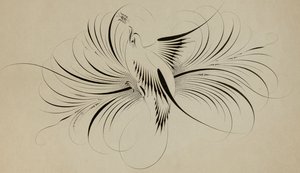
Not only did Meub create “stylish visiting cards,” but he also created decorative specimens or fragments of ornamental text and illustrations that one could use to embellish their scrapbook. This collection holds several specimens of a popular ornamentation called the bird flourish. These intricate works of calligraphy act as an extension of a bird's feathers with sweeping pen strokes and dramatic line work.
Diplomas were evidently another one of Meub’s specialties, as he mentioned to a friend “I am pretty tired this week—have finished 2500 diplomas”. Meub mentioned that he wrote the diplomas in Old English script (a font that we still use today), which took him around 7 weeks to complete. He also dove into the penmanship supplies market and sold Gillott’s fine-point dip pens, penholders, paper, and black and white ink.
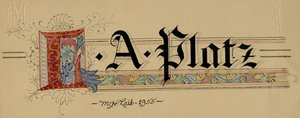
In addition to Meub, numerous legendary ornamental artists are represented in this collection. First-hand accounts of these professionals can be seen throughout the collection’s correspondence. L. A. Platz, Syracuse native and friend of Meub, compiled the letters of his colleagues to simply document his conversations; however, these documents also illuminate the unique styles and techniques of each penman.
This is only a glimpse of the collection, but there is certainly more to be seen in the autograph albums, publications, scrapbooks and other miscellaneous penmanship treasures enclosed. I sincerely hope that you will enjoy this collection as much as I did.
References:
https://www.zaner-bloser.com/company/history
https://library.syracuse.edu/digital/guides/p/penman.htm
Penmanship Collection, Special Collections Research Center, Syracuse University Libraries
